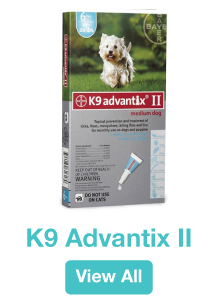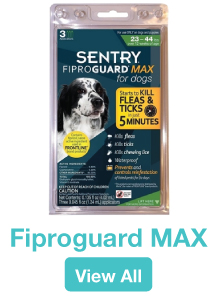
Rocky Mountain Fever in Dogs
Rocky Mountain Spotted Fever is a bacterial infection and one of various zoonotic diseases that humans can become infected with. Humans contract this infection by the bite of ticks infected with the organism Rickettsia rickettsii. At least one case of this illness has been reported in nearly every state in the U.S. This is one of many reasons that it is important to keep fleas and ticks away from pets.
The Culprits
- D. variabilis - The American Dog Tick or the Lone Star Tick, the most common contributor of this infection, residing in the eastern US.
- D. andersoni - Rocky Mountain wood tick in the western US.
How Do I Catch It?
This infection is not transmittable from person to person. It is caused by an infection with bacteria through a tick bite. Pets may be carriers of an infected tick, so they should be treated for ticks on a regular basis to prevent an outbreak. You and your pet may be at additional risk of this infection if you live in an area where the disease is common and spend a lot of time outdoors in grassy or woody areas. The infection is also more likely to spread if it is the spring or early summer.

Removing a Tick
Do not crush a tick with your fingers. If any part of the tick gets into a cut or abrasion on your skin, you may become infected as you would by a tick bite. Pull the tick straight out with a pair of tweezers. You may want to keep the tick for your physician to analyze for an infection.
What are the Symptoms?
Humans:
Within 2 weeks of a tick bite, symptoms will arise if you have been infected with Rocky Mountain Spotted Fever; however, not everyone recalls a bite from a tick and may be confused when these symptoms occur. The primary indicator for humans would be the rash composed of small red spots or blotches. This infection may cause moderate to severe damage to the heart, brain, lungs, kidney, and extremities if not properly and promptly treated.
- Rash: Small red spots or blotches on the wrists, ankles, palms, and soles that spread to the limbs and trunk
- Fever: A 103-105 degree Fahrenheit fever with chills, pain and headache may occur
- Nausea
- Vomiting
- Loss of appetite
- Abdominal pain
- Fatigue
Dogs:
Signs normally appear within a week of the tick bite. There are two stages of the disease, the first of which entails no symptoms. This stage, the sub-clinical stage, marks a time in which the test may be observed by your veterinarian through laboratory tests and treated before serious signs afflict your pet. The symptoms displayed during the secondary acute stage are as follows:
- Fever
- Loss of appetite
- Muscle and joint pain
- Swollen lymph nodes
- Edema in the face and legs
- Dizziness
- Depression
- Stupor
- Seizures
Dogs suspected of being infected with this disease should undergo blood tests and skin biospsies of the affected areas. These tests will be used, respectively, to determine antibody levels and locate antigens that indicate the presence of R. rickettsii. Depending on your dog's medical history, additional tests may be performed to determine whether or not the disease is afflicting other organ systems.
These tests may also help your veterinarian distinguish your pet's condition from similar diseases. Borreliosis (lyme disease) is another condition with similar symptoms that can infect your dog following a tick bite. Though the prognosis of either disease ultimately differs, the two diseases are similar enough such that your veterinarian may prescribe an antibiotic before differentiating between the two afflictions.

Treatment
Rocky Mountain Spotted Fever may result in death if not properly treated. Getting to a vet or doctor promptly is important for the treatment of this disease. Typically, antibiotics are used to treat the disease in both humans and pets. The most common antibiotics used for pets include doxycycline, enrofloxacin, or chloramphenicol. Depending on the development of the disease, you veterinarian may also prescribe additional medication to control secondary symptoms caused by the disease.
If treated in the first several days following the tick bite, your dog will likely recover completely; however, dogs that have already suffered severe damage to their nervous system may be unable to recover entirely. Your dog's breed may also make him more susceptible to severe signs of the illness, with German Shepherds and English Springer Spaniels being particularly at-risk.
Prevention
Avoid tick-infested areas, like woods or fields. Use flea and tick repellents like K9 Advantix II, Frontline Plus, Seresto, Advantage Multi or Revolution. Mow your lawn to discourage tick populations. Before you enter your house, check yourself and your family for ticks. Behind the knees, between fingers, on the neck, hairline, and head are common areas for a ticks to reside. If you find a tick, remove it as quickly as possible. If you have been bitten, disinfect the bite and wash your hands.
For more ways to keep your pet safe from Rocky Mountain Spotted Fever and other tick-borne illnesses, check out the preventives below. These preventatives include collars and topicals that can repel a wide array of disease-carrying parasites. You should also ask your veterinarian which solution may work best for your pet.








